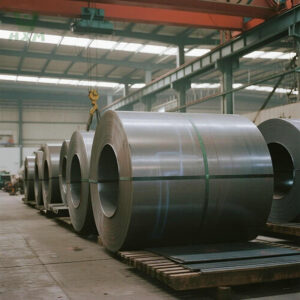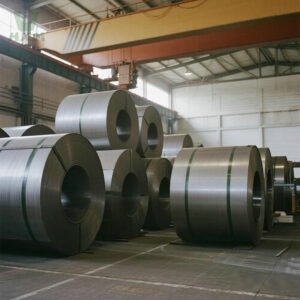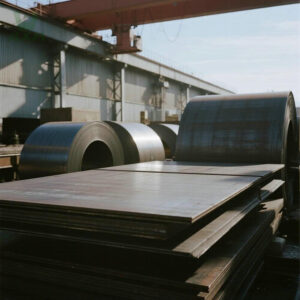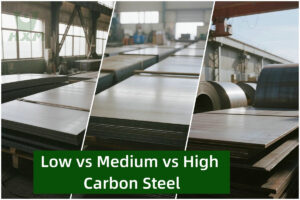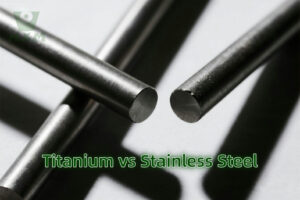
Understanding the melting point of stainless steel is critical for engineers, manufacturers, and designers working in high-temperature environments. As a premier stainless steel supplier and manufacturer, Huaxiao-Alloy delivers precision-engineered 304 and 316 stainless steel grades optimized for thermal stability, corrosion resistance, and structural integrity. This comprehensive guide explores the melting temperature of stainless steel, compares 304 and 316 alloys, and provides actionable insights for material selection.
1. The Science Behind Stainless Steel Melting Points
The melting point of stainless steel refers to the temperature range at which it transitions from solid to liquid. For stainless steel, this range depends on its chemical composition:
- Chromium (Cr): Increases oxidation resistance and slightly elevates melting points.
- Nickel (Ni): Lowers melting temperature while enhancing ductility.
- Molybdenum (Mo): Boosts high-temperature strength but reduces thermal conductivity.
Why Melting Temperature Matters:
- Welding & Fabrication: Exceeding the melting temp of stainless steel can cause warping or slag formation.
- Thermal Fatigue: Materials must withstand cyclic heating/cooling without cracking.
- Corrosion Resistance: Alloys retain protective oxide layers up to ~870°C (1,598°F).
As a stainless steel manufacturer, Huaxiao-Alloy leverages advanced vacuum arc remelting (VAR) to minimize impurities and stabilize melting points.
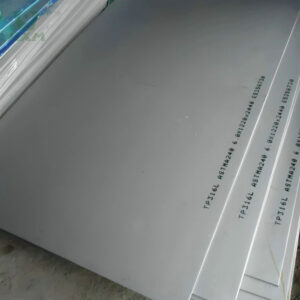
316 / 316L Stainless Steel Sheet&Plate
Huaxiao Alloy is a professional stainless steel supplier, specializing in high-quality stainless steel sheets and plates for global industries. Our TP316 / 316L stainless steel sheets and plates are manufactured to international standards, ensuring excellent corrosion resistance, durability, and reliability for demanding applications.
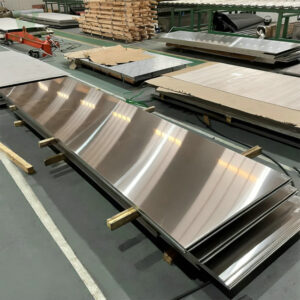
304 / 304L Stainless Steel Sheet&Plate
Huaxiao Alloy is a professional stainless steel supplier dedicated to providing high-quality materials for global industries. Our 304 / 304L stainless steel sheets and plates are manufactured to meet international standards, ensuring superior performance in various applications.
2. 304 Stainless Steel: Melting Point, Thermal Conductivity, and Uses
Key Specifications:
- Melting Point Range: 1,400–1,450°C (2,552–2,642°F)
- Thermal Conductivity: 16.2 W/m·K (at 100°C)
- Composition:
- Cr: 18–20%
- Ni: 8–10.5%
- C: ≤0.08%
Industrial Applications:
- Food Processing: Equipment like autoclaves and conveyor systems (melting point ensures sterilization safety).
- Automotive: Exhaust manifolds (resists temps up to 900°C/1,652°F).
- Construction: Structural beams and fasteners (balances strength and weldability).
Huaxiao-Alloy’s 304 Stainless Steel Offerings:
- Cold-rolled sheets (0.1–50mm thickness).
- Seamless tubing for HVAC systems.
- Custom forgings for high-stress components.

316 / 316L Stainless Steel Sheet&Plate
Huaxiao Alloy is a professional stainless steel supplier, specializing in high-quality stainless steel sheets and plates for global industries. Our TP316 / 316L stainless steel sheets and plates are manufactured to international standards, ensuring excellent corrosion resistance, durability, and reliability for demanding applications.

304 / 304L Stainless Steel Sheet&Plate
Huaxiao Alloy is a professional stainless steel supplier dedicated to providing high-quality materials for global industries. Our 304 / 304L stainless steel sheets and plates are manufactured to meet international standards, ensuring superior performance in various applications.
3. 316 Stainless Steel: Melting Temperature, Thermal Properties, and Performance
Key Specifications:
- Melting Point Range: 1,370–1,400°C (2,500–2,552°F)
- Thermal Conductivity: 15.5 W/m·K (at 100°C)
- Composition:
- Cr: 16–18%
- Ni: 10–14%
- Mo: 2–3%
Industrial Applications:
- Marine Engineering: Ship propellers and desalination plants (resists saltwater pitting up to 1,200°C/2,192°F).
- Pharmaceuticals: Reactor vessels (handles acidic media at elevated temps).
- Chemical Processing: Pipelines and valves (Mo content prevents chloride stress corrosion).
Huaxiao-Alloy’s 316 Stainless Steel Solutions:
- Hot-rolled plates with ASTM A240 compliance.
- Precision wire for medical devices.
- ER316L welding electrodes for cryogenic applications.
4. Head-to-Head Comparison: 304 vs 316 Stainless Steel
| Property | 304 Stainless Steel | 316 Stainless Steel |
|---|---|---|
| Melting Point | 1,400–1,450°C | 1,370–1,400°C |
| Thermal Conductivity | 16.2 W/m·K | 15.5 W/m·K |
| Corrosion Resistance | Good (general atmospheres) | Excellent (marine/chemical) |
| Typical Uses | Food equipment, architecture | Marine hardware, reactors |
| Cost (USD/kg) | 3.50–4.20 | 5.00–6.50 |
Data Source: Huaxiao-Alloy’s Material Test Reports (MTRs)
5. Factors Influencing the Melting Point of Steel
a. Alloying Elements
- Molybdenum: Reduces thermal conductivity (e.g., thermal conductivity of SS 316 = 15.5 W/m·K) but enhances creep resistance.
- Carbon: Lowers melting point; 304/316 limit carbon to ≤0.08% for weldability.
b. Manufacturing Processes
- Hot Rolling: Alters grain structure, affecting heat tolerance.
- Annealing: Restores ductility post-cold working.
c. Environmental Conditions
- Oxidizing vs. Reducing Atmospheres: Affects oxidation rates at high temps.
Huaxiao-Alloy’s R&D team optimizes these variables to meet client-specific stainless steel melt temp requirements.
6. Industrial Applications: From Cryogenics to High-Heat Systems
High-Temperature Applications (300–1,000°C):
- Aerospace: Jet engine components (316’s Mo resists fuel sulfur).
- Power Generation: Boiler tubes (304’s high melting point ensures safety).
Cryogenic Applications (-200°C):
- LNG Storage Tanks: 316’s toughness prevents brittle fracture.
- Medical Cryovials: 304’s thermal conductivity aids rapid cooling.
Custom Solutions by Huaxiao-Alloy:
- Clad Plates: 304/316 layered composites for thermal gradient zones.
- Precision Castings: Investment casts for turbine blades.
7. Huaxiao-Alloy’s Expertise in High-Temperature Stainless Steel Solutions
As a certified stainless steel supplier and manufacturer, we provide:
- Material Certification: EN 10204 3.1/3.2 mill test certificates.
- Advanced Testing:
- Differential Scanning Calorimetry (DSC) for precise melting point of SS 304/316.
- Eddy current testing for defect detection.
- Global Supply: 30,000+ tons annual production capacity.

316 / 316L Stainless Steel Sheet&Plate
Huaxiao Alloy is a professional stainless steel supplier, specializing in high-quality stainless steel sheets and plates for global industries. Our TP316 / 316L stainless steel sheets and plates are manufactured to international standards, ensuring excellent corrosion resistance, durability, and reliability for demanding applications.

304 / 304L Stainless Steel Sheet&Plate
Huaxiao Alloy is a professional stainless steel supplier dedicated to providing high-quality materials for global industries. Our 304 / 304L stainless steel sheets and plates are manufactured to meet international standards, ensuring superior performance in various applications.
A: The melting point of 304 stainless steel is 1,400–1,450°C (2,552–2,642°F).
A: Yes. The melting temperature of 316 stainless steel is 1,370–1,400°C (2,500–2,552°F) due to higher nickel and molybdenum content.
A: Lower thermal conductivity of SS 316 (15.5 W/m·K) makes it ideal for insulation, while 304’s higher conductivity (16.2 W/m·K) suits heat exchangers.
A: Absolutely. We adjust Cr/Ni/Mo ratios to achieve target stainless steel melt points and thermal properties.
A: Most furnaces operate at 1,500–1,600°C, exceeding the melting temp of stainless steel for casting/welding.
Recent Blog
If you found this article good, feel free to share it on your other social media platforms.

